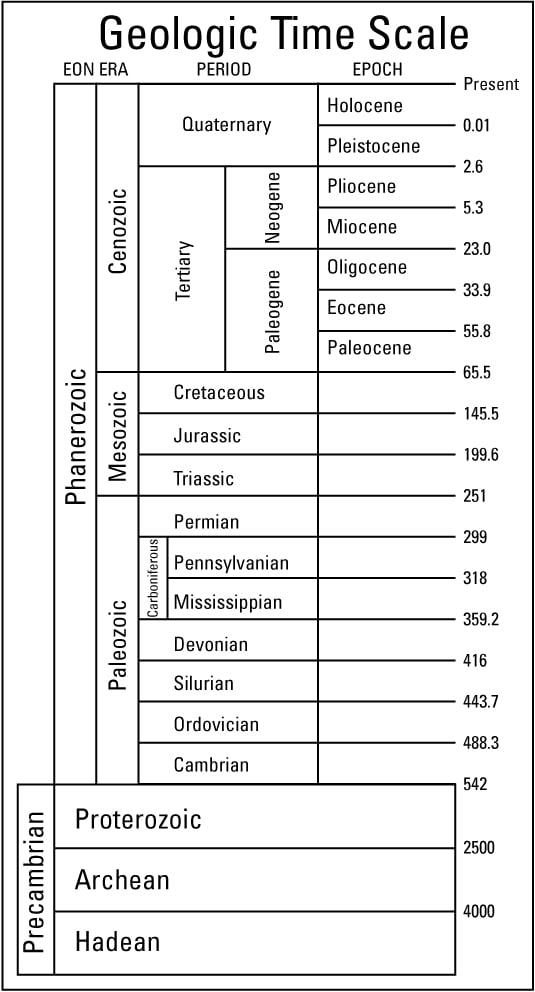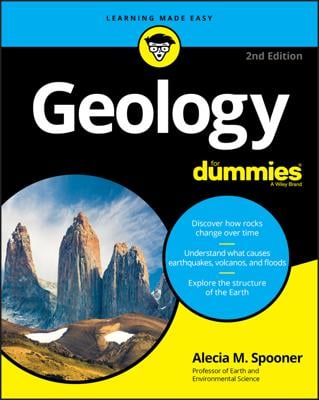Geologists organize the 4.6 billion years of earth's history into sections based on important changes seen in the geologic record. The largest intervals are eons, with each eon composed of many millions of years. Within the eons are eras, which begin and end with dramatic changes in the types of plants and animals living on earth. Within each era are multiple periods, and within each period are multiple shorter epochs.
Because the intervals of the geologic timescale are based on observed changes in fossilized remains on life on earth, the span of time within each interval varies. While the divisions may be confusing at first, learning about the events in earth's history goes hand-in-hand with learning the geologic timescale, shown below. (The numbers on the right side reflect the absolute age, expressed in millions of years ago, of the earth at each interval.)
The geologic timescale is continually being revised by new research and more accurate dating methods. When changes are proposed, the International Commission on Stratigraphy determines if an official change to the timescale should be made. For the most recent version, check out the Commission's website at http://stratigraphy.org.


